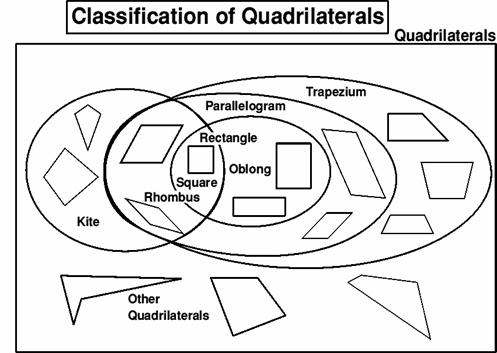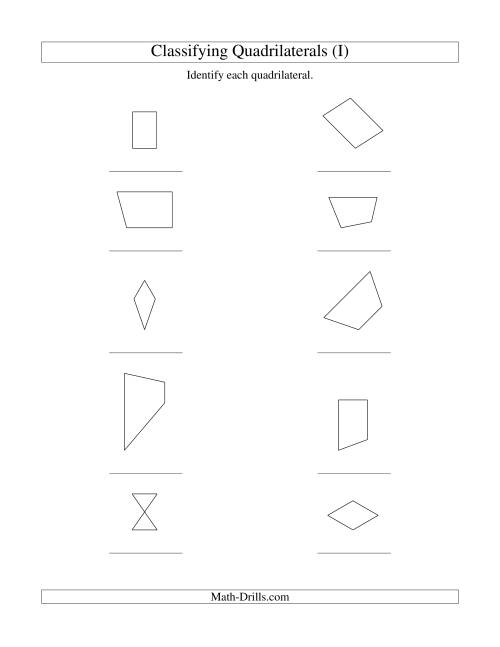
The shapes of elementary geometry are invariably convex. The point of intersection of the sides is not considered a vertex of the quadrilateral.

A quadrilateral that is not simple is also known as self-intersecting to indicate that a pair of his non-adjacent sides intersect. So that two non-adjacent sides do not cross. In either case, the quadrilateral is simple, which means that the four sides of the quadrilateral only meet at the vertices, two at a time. The seldom used term quadrangle has exactly the same meaning as quadrilateral, however the two related terms - complete quadrangle and complete quadrilateral - describe essentially different configurations.Ī quadrilateral may be convex or concave (see the diagram below.) A quadrilateral that is concave has an angle exceeding 180 o. Although we use words like pentagon and polygon, the term quadrilateral has completely replaced tetragon. The Latin term is a partial translation of Greek tetragon, literally "four angles," since a closed figure with four angles also has four sides. Quadrilateral (noun, adjective): the first element is from Latin quadri- "four" from the Indo-European root k wetwer- "four." The second element is from Latin latus, stem later-, "side," of unknown prior origin. So all other quadrilaterals are irregular.Quadrilateral is a geometric shape that consists of four points ( vertices) sequentially joined by straight line segments ( sides). The only regular (all sides equal and all angles equal) quadrilateral is a square. and that's it for the special quadrilaterals. one of the diagonals bisects (cuts equally in half) the other.the diagonals, shown as dashed lines above, meet at.The KiteĮach pair is made of two equal-length sides that join up. (the US and UK definitions are swapped over!)Īn Isosceles trapezoid, as shown above, has left and right sides of equal length that join to the base at equal angles. NOTE: Squares, Rectangles and Rhombuses are allĪ trapezoid (called a trapezium in the UK) has a pair of opposite sides parallel.Īnd a trapezium (called a trapezoid in the UK) is a quadrilateral with NO parallel sides: Also opposite anglesĪre equal (angles "A" are the same, and angles "B" The ParallelogramĪ parallelogram has opposite sides parallel and equal in length. In other words they "bisect" (cut in half) each other at right angles.Ī rhombus is sometimes called a rhomb or a diamond. The RhombusĪ rhombus is a four-sided shape where all sides have equal length (marked "s").Īlso opposite sides are parallel and opposite angles are equal.Īnother interesting thing is that the diagonals (dashed lines) meet in the middle at a right angle.

The SquareĪ square has equal sides (marked "s") and every angle is a right angle (90°)Ī square also fits the definition of a rectangle (all angles are 90°), and a rhombus (all sides are equal length). The little squares in each corner mean "right angle"Ī rectangle is a four-sided shape where every angle is a right angle (90°).Īlso opposite sides are parallel and of equal length. Let us look at each type in turn: The Rectangle Some types are also included in the definition of other types! For example a square, rhombus and rectangle are also parallelograms. There are special types of quadrilateral: They should add to 360° Types of Quadrilaterals Try drawing a quadrilateral, and measure the angles.



 0 kommentar(er)
0 kommentar(er)
